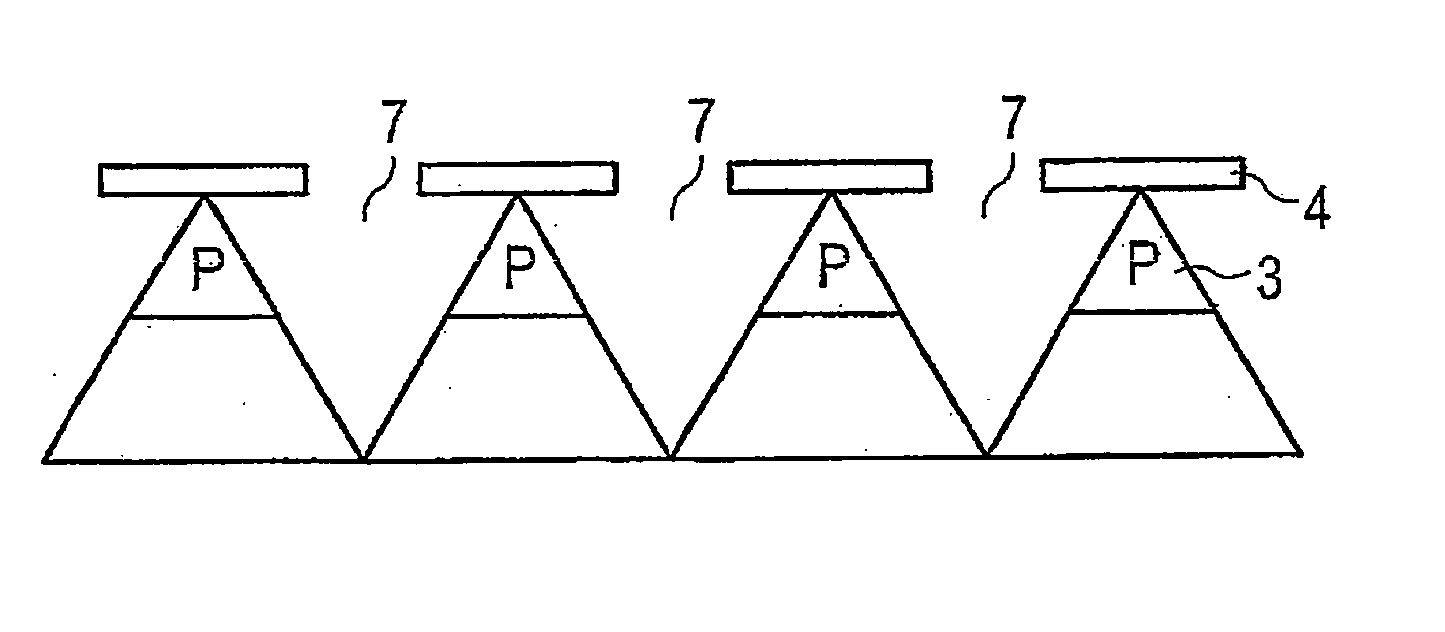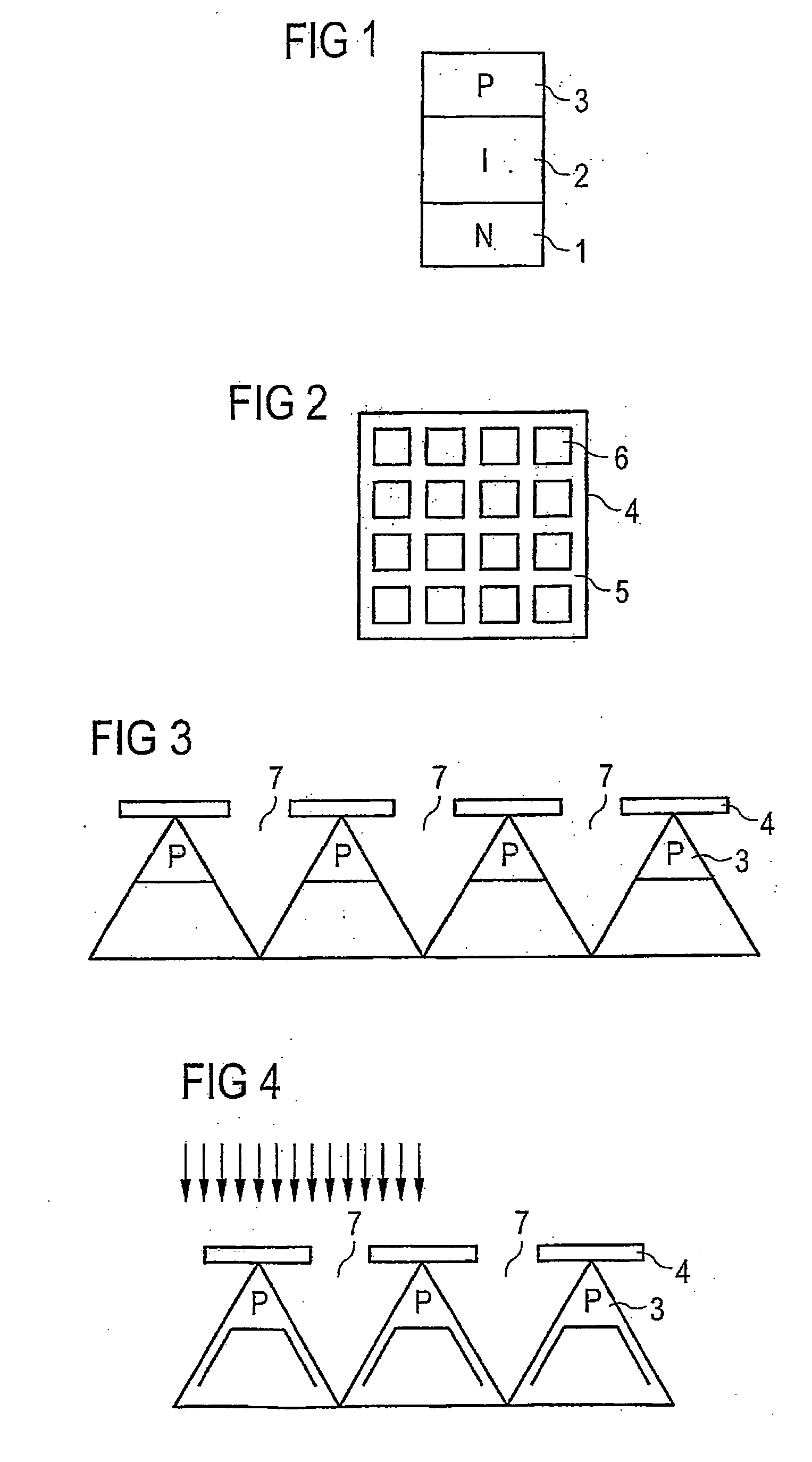Method for the production of an anti-reflecting surface on optical integrated circuits
- Summary
- Abstract
- Description
- Claims
- Application Information
AI Technical Summary
Benefits of technology
Problems solved by technology
Method used
Image
Examples
Embodiment Construction
[0029]FIG. 1 shows the basic construction of a photodetector comprising a cathode 1 (n-region), an intrinsic region 2 (i-region) and an anode 3 (p-region) arranged thereabove. This structure is produced on a substrate, for example a silicon substrate, by arsenic implantation, epitaxy and boron implantation. This structure is part of a wafer that is large in areal terms and has been provided with a hard mask 4 by means of an SiO2 deposition and subsequent photolithography. The hard mask 4 may be patterned by customary dry etching, thus giving rise to webs 5 having a width of 0.3 μm to 1 μm and mesh openings 6 having a width 0.5 μm to 5 μm (FIG. 2).
[0030] A structure etching step is subsequently performed, preferably by means of anisotropic, wet-chemical etching, and produces depressions (trenches) having a depth of approximately 1.5 μm that are arranged in regularly distributed fashion and have acuter angles than pyramids with (111) faces, or preferably inverse pyramids 7 (FIG. 3). ...
PUM
 Login to View More
Login to View More Abstract
Description
Claims
Application Information
 Login to View More
Login to View More - R&D
- Intellectual Property
- Life Sciences
- Materials
- Tech Scout
- Unparalleled Data Quality
- Higher Quality Content
- 60% Fewer Hallucinations
Browse by: Latest US Patents, China's latest patents, Technical Efficacy Thesaurus, Application Domain, Technology Topic, Popular Technical Reports.
© 2025 PatSnap. All rights reserved.Legal|Privacy policy|Modern Slavery Act Transparency Statement|Sitemap|About US| Contact US: help@patsnap.com


